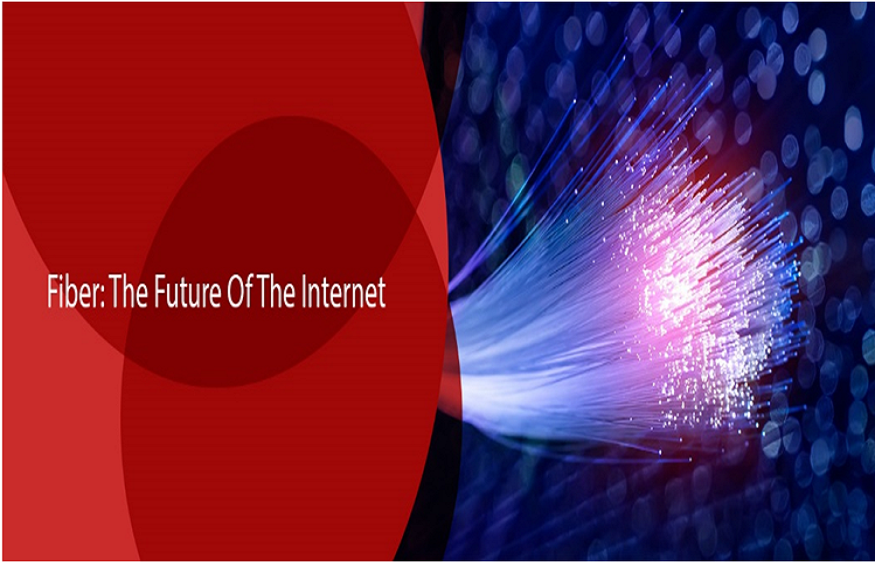Fiber-optic cables are the leading technology fueling the growth of internet speeds right now. Many leading internet service providers (ISPs) such as AT&T and Grande Communications (now part of Astound Broadband) are upgrading their infrastructure with fiber-optic cables to provide ever higher speeds.
Fiber-optic cables are superior to copper cables in every way. As the demand for high-speed, low-latency internet connections continues to increase, fiber will eventually take over as the predominant means of data transfer in the world. But why fiber-optic cables? Why can’t we just use more copper cables to increase bandwidth? How are fiber-optic cables different? Why should you choose a fiber-powered internet connection? Let’s explore this technology of the future and answer these and many other questions.
What’s Wrong with Copper Cables?
1. How Copper Powered the Internet
Copper cables have been used for data transfer since long before anyone had heard of the internet. Copper is an excellent conductor of electricity. It is used for power transmission and wiring in buildings. It’s also used to transmit telecommunications signals everywhere around the globe, which is where the internet first began.
Instead of building a new infrastructure from the ground up, telecommunications companies started using phone lines to carry data for the internet. Cable providers soon followed and now these industries use the same infrastructure.
Copper telecommunications networks were vital to providing internet connectivity to homes. However, as file sizes grew exponentially, it became obvious that this network would not be able to keep up.
2. Limits of Copper Cables
The bandwidth of copper cables is limited by signal loss due to resistance. Resistance increases with the length of the wire and decreases with the thickness. So, for higher data rates at longer distances, we need ever-thicker copper cables.
The fastest copper cables can transmit data to more than 10Gbps. However, cables capable of this speed have to be around 0.4 inches thick. These cables are used to carry data from a large number of devices between cities and continents. Even if these cables were used to provide connection directly to houses, the connection speed won’t increase unless ISPs switch to even thicker copper cables for the network. But there is another way.
How Fiber-Optic Cables Are Saving the Day
Fiber-optic cables are transparent fibers made of glass or polymer. They use light as a medium for data transfer. The maximum data transfer rate of a fiber-optic cable does not depend on its thickness. Fiber-optic cables also have a much lower signal loss, so they can transfer data at long distances without introducing errors.
Currently, there are practically no theoretical limits to the data rates of fiber-optic cables. Many ISPs are using fiber-optic cables for their infrastructure. Fiber connections have low latency and high top speeds exceeding 1 Gbps. The larger bandwidth of fiber-optic cables allows ISPs to handle more data at the same time. This limits the need to throttle internet speeds, so you get top speeds even when a lot of people are using the internet.
Why You Need Fiber Internet
Fiber internet is faster, more consistent, and has lower latency than cable internet. How do these advancements translate to a better experience for you? Let’s look at some reasons you might want fiber internet.
Keep Up With Increasing File Sizes
An average file today is much larger than it used to be a few years ago. Improvements in storage allow us to keep and share large files, which requires higher internet speeds.
Photos, videos, audio, and documents are larger now than ever before. Even work files have greatly increased in size except for a few file types. Even if you don’t need 300 Mbps or higher internet speed now, you will soon.
Grande is currently offering its fiber internet with a 2-year price lock. Contact Grande Customer Service to learn more.
Up Your Game with Low Ping
Low ping is essential for online gaming. Fiber internet has lower error rates, ensuring your data packets reach the game server without lag. The higher bandwidth of fiber internet also lowers wait time. Last but not least, light travels faster in fiber-optic cables than the electric current in copper cables. So your data takes less time to reach the server, lowering latency.
Stream in 4K, Anytime
You need high download speeds to stream in Full and Ultra HD. You probably stream movies and TV around 8:00 pm, but so does everyone else. Cable-based ISPs have to limit everyone’s speeds to avoid network congestion during these peak hours. But with fiber internet, you can stream 4K movies any time of the day.
Grande is offering fiber-based internet plans at affordable rates with no data caps or contracts. You can get speeds ranging from 300 to 1200 Mbps with Grande Internet in Texas. Visit buytvinternetphone.com to learn more.

